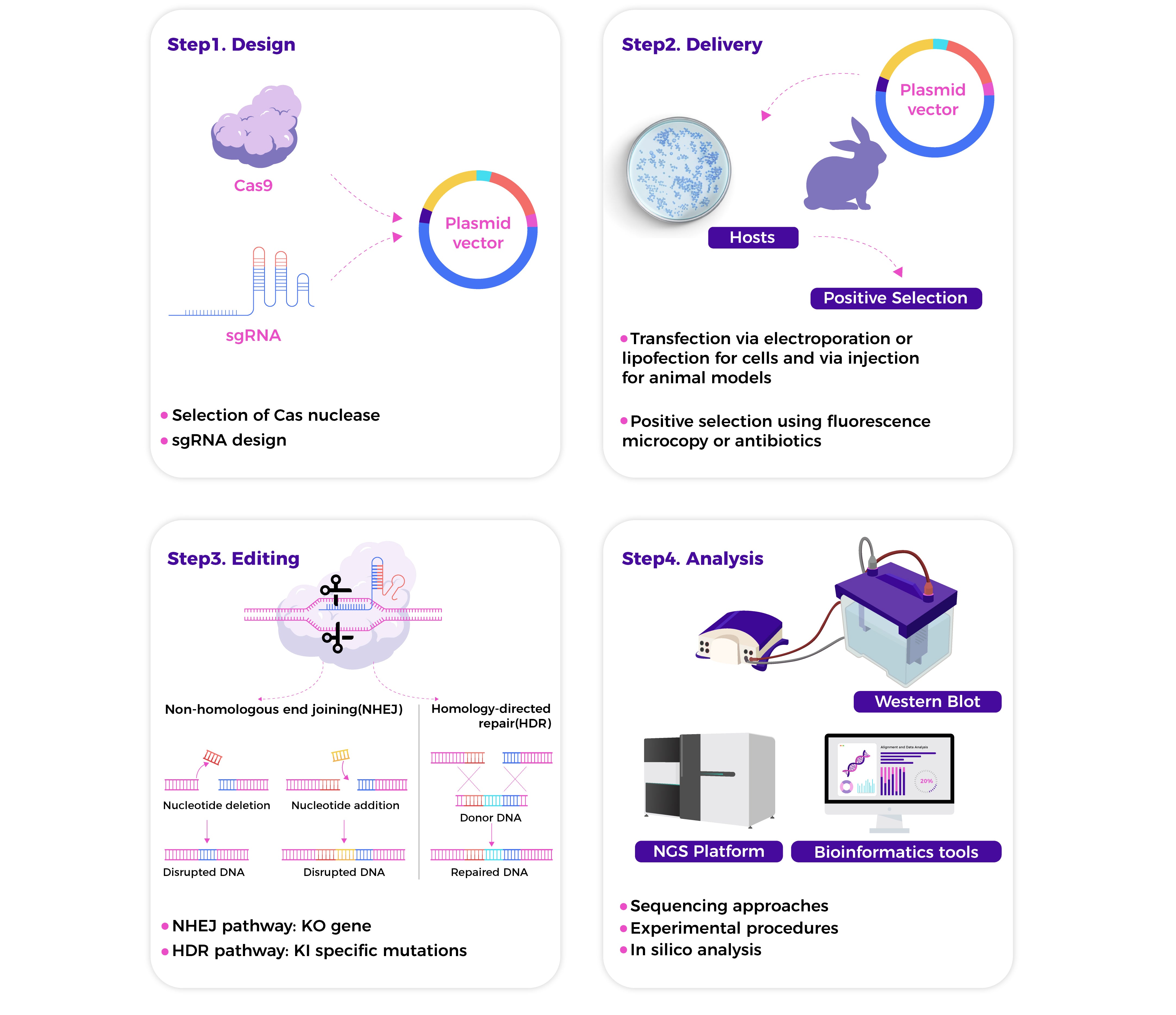
Gene Editing & Mutagenesis
Overview
Gene editing technologies, especially CRISPR-Cas9, are highly efficient, precise, and cost-effective tools widely used for targeted DNA modification. The typical workflow involves four steps:
Applications
This system has transformed genetic engineering, enabling applications from basic research to therapeutic development. Key areas include:
1. Knockout Studies
CRISPR-Cas9 induces double-strand breaks (DSBs), typically repaired via non-homologous end joining (NHEJ), often resulting in gene disruption. Applications include:
● Functional analysis of genes involved in signaling, metabolism, and development.
● Generation of cellular and animal disease models.
● Investigation of gene family redundancy.
2. Therapeutic Editing
CRISPR is facilitating the correction of various genetic disorders, including:
● Precise repair of single-nucleotide mutations.
● Exon deletion for gene therapy.
● Modulation of gene expression to enhance immune responses or combat infections.
3. Targeted Insertions/Deletions
Beyond knockouts, CRISPR enables complex genomic engineering, including:
● Insertion of reporter genes or regulatory elements.
● Deletion of specific exons or domains to study protein function.
● Precise mutation modeling using homology-directed repair (HDR) or prime editing.
From discovery to therapeutic translation, CRISPR-Cas9 has become a cornerstone of modern molecular biology.


